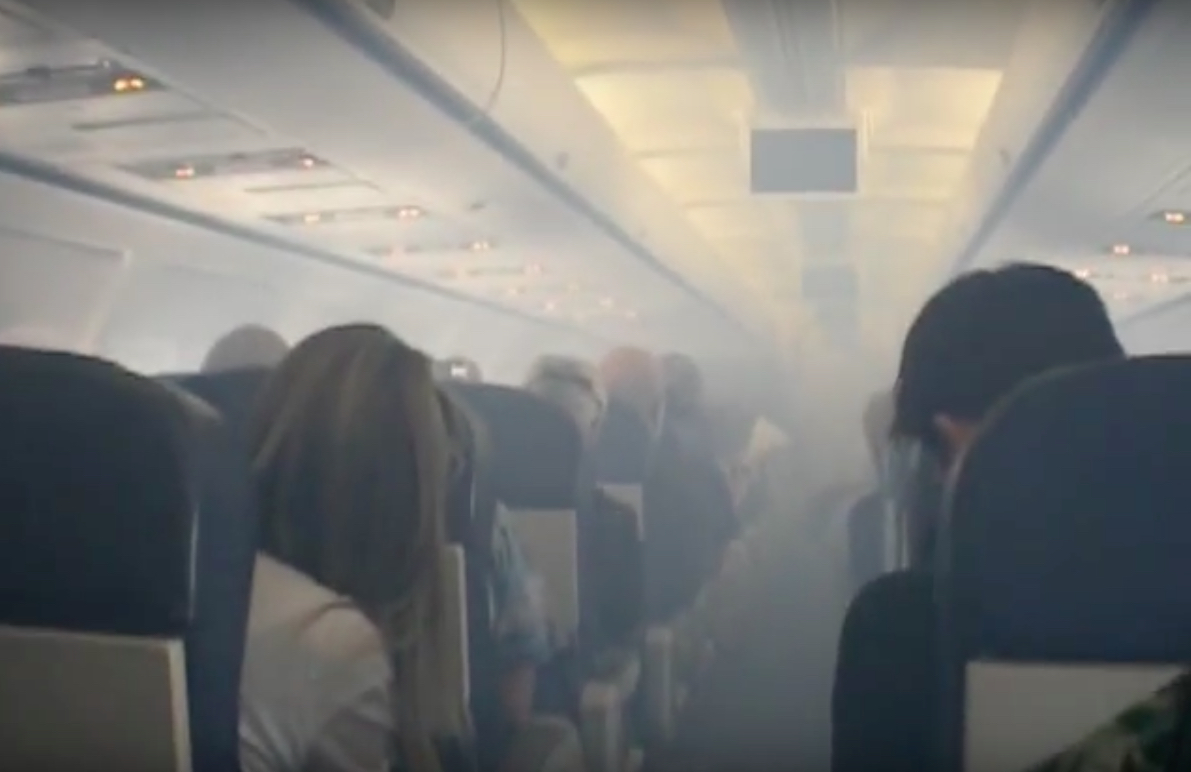
Campaigners are calling for the International Criminal Court at the Hague to investigate so-called ‘aerotoxic syndrome’ – a condition which is supposedly caused by dangerous chemicals and engine oil particles getting into the cabin air which is then breathed in by flight and cabin crew, as well as passengers.
A study published by the World Health Organisation, which was conducted by researchers at the University of Stirling in Scotland last year concluded that aerotoxic syndrome should be recognised as an occupational disorder and that further medical investigation was “urgently” required.
Researchers found that people who had been exposed to contaminated cabin air were at risk of developing longterm breathing problems, chronic fatigue, cardiovascular problems and memory impairment. On many aircraft models, air is fed into the cabin via the engines – so-called ‘bleed air’ – which researchers say is susceptible to becoming contaminated.
The issue was first discovered as early as 1955 when the first civilian planes manufacturers adopted the military practice of bleeding unfiltered air from engine compressors to supply the cabin ventilation system. Since then, most passenger planes still supply air to the cabin in the same way – with the notable exception of the Boeing 787 Dreamliner.
Captain John Hoyte, the chairman of the Aerotoxic Association, a London-based campaign group says an international criminal investigation is urgently needed. Hoyte, who is a former BAe pilot says the association has been contacted by over 2,500 potential victims who have suffered serious health problems that may be associated with toxic cabin air.
Thousands of passengers and aircrew are likely to be affected every year – and not only from extreme cases when a cabin fills with a dark cloud of fumes (as shown in the main photo). So far, only British low-cost carrier, EasyJet and ULCC Spirit have said they will fit bleed air filters to their existing aircraft fleet.
“EasyJet has changed engine oil to a safer formulation and will fit ‘bleed air’ filters and nerve agent detectors to all of their aircraft, because of an ongoing French criminal court case,” Captain Hoyte told the London Economic.
“Despite decades of evidence and scientific research, air passengers are still put at risk every day from this preventable danger.”
Hoyte was forced to retire early from his career after suffering life-changing symptoms which he claims was caused by Aerotoxic Syndrome. He was one of 27 pilots who was tested by University College London during a study into the condition – all 27 volunteers showed evidence of toxic poisoning according to Hoyte.
The Aerotoxic Association is now calling on potential sufferers of the condition to get in contact and share their stories.
Speaking to the Independent, Peter Lawton, a spokesperson for the Aerotoxic Association explained:
“The Aerotoxic Association is calling for an Independent Public Inquiry at the International Criminal Court in The Hague into all the evidence, for and against, of the impact of toxic cabin air in aircraft,”
“This is following numerous scientific research papers over the last 20 years highlighting health concerns and our contact with around 2,500 people who we believe are victims of Aerotoxic Syndrome.
“Our hope is that the court will consider all the evidence on this matter and realise that, based on the precautionary principle, it is vital that the known solutions to this problem in terms of air filtration systems are made mandatory in all aircraft that use ‘bleed air’ for their pressurised cabin air.”
More information, as well as the option to submit details of a ‘fume event’ can be found here.
Mateusz Maszczynski honed his skills as an international flight attendant at the most prominent airline in the Middle East and has been flying ever since... most recently for a well known European airline. Matt is passionate about the aviation industry and has become an expert in passenger experience and human-centric stories. Always keeping an ear close to the ground, Matt's industry insights, analysis and news coverage is frequently relied upon by some of the biggest names in journalism.







